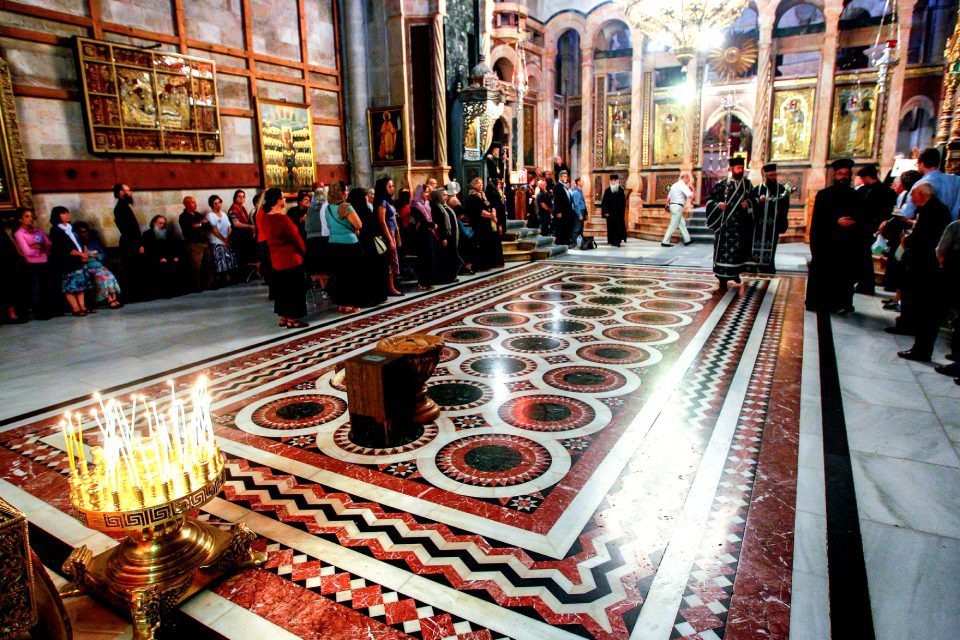Opus Sectile in the Land of Israel is a fascinating subject. But what is Opus Sectile? So Opus Sectile means “cutwork”. In fact, it is a technique for paving floors in geometric patterns or figurative scenes using meticulously cut and polished polychrome stone tiles. These floors first appeared in the fourth century BCE in Greek architecture. the Romans by the late second century BCE adopted them. Later, the use of this technique was extended to wall decorations; and even inlaid tabletops.
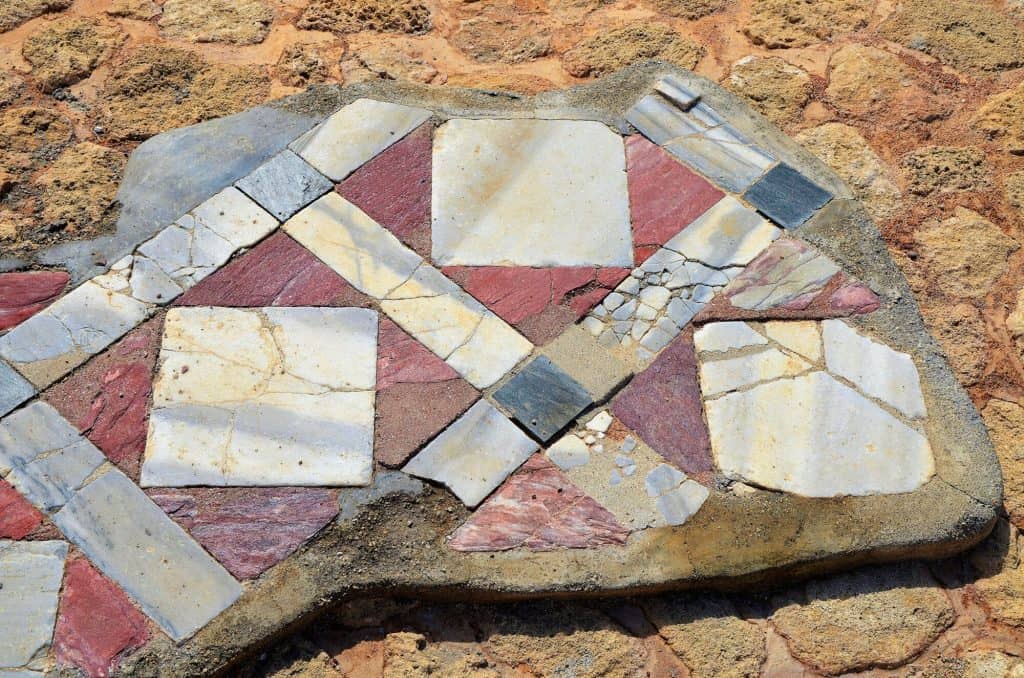
When Was It First Introduced To The Land Of Israel?
Herod the Great was the first to introduce Opus Sectile to the Land of Israel. He used Opus Sectile pavements for his monumental building projects. For example, when he built the Roman Baths at Masada, he also installed an Apodyterium. And there, you can see sections of the original Opus Sectile floor tiles.
Unique Opus Sectile floor was uncovered in the excavations of E. Netzer and E.Damati in the Caldarium of a Roman Bath House on the summit at Kypros Castle. Extravagance in the architectural style of Herodian palaces was evidenced in the frescoed walls, stucco decorations, and fluted columns. But also in the choice of flooring. Not being satisfied with only the popular local mosaics floor. Herod imported the latest fashion in flooring Roman villas; the colorful Opus Sectile floor tiles.
Opus Sectile Workshop Revealed In Caesarea Maritima
In May 1994, under an ongoing excavation, archaeologists found a room containing thousands of Opus Sectile panels in Caesarea Maritima. It was a workshop for Opus Sectile. In the final analysis of the room, nine different layers of Opus Sectile stacked on top of each other were unearthed. Also, 30 different types of stones in multiple colors. For example, Marble, Lime, red and grey Granite, and more.
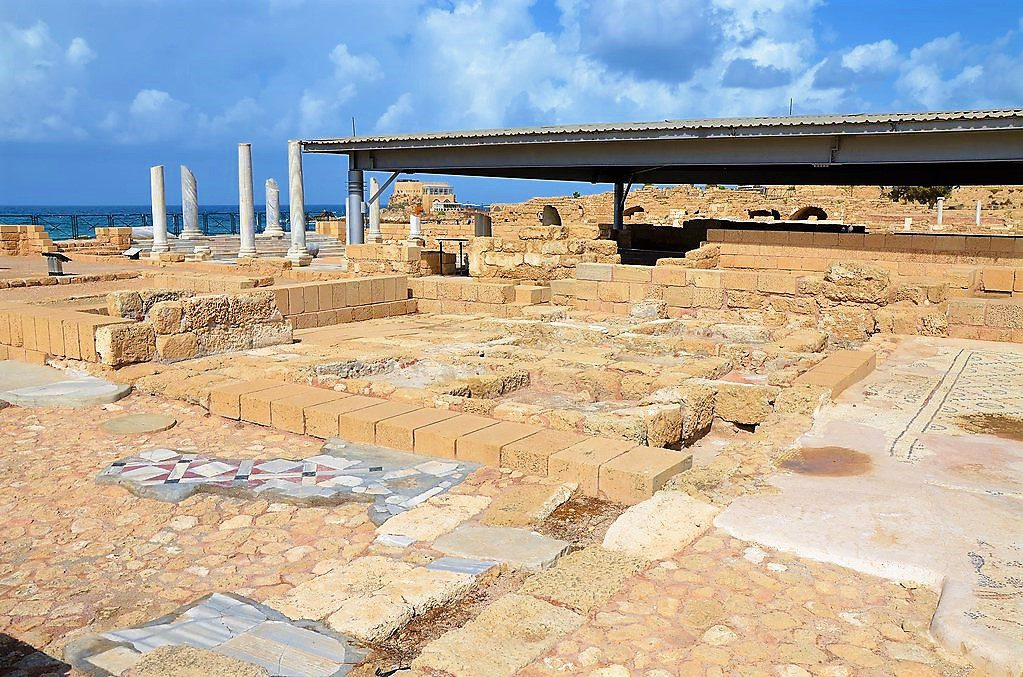
Opus Sectile, Found in the Church of the Holy Sepulchre
You can also find during the Crusader Period the use of Opus Sectile. The use of these tiles can be traced to 11th and 12th-century floors in the Church of the Holy Sepulchre, chiefly in the Chapel of the Apparition and the Chapel of the Franks. Moreover, the same Opus Sectile pattern was repeated in the Crusader-era renovations in the Church of St. John in the mountains in Ein Kerem laid in the main sanctuary and in the grotto.
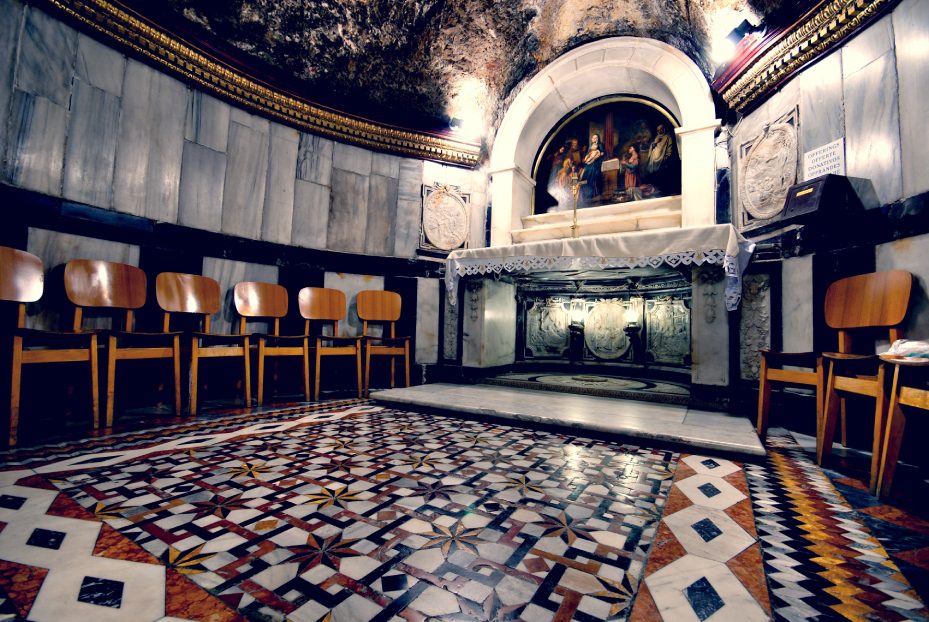
Similarly, you can find Opus Sectile floors on other parts of the Church of the Holy Sepulchre, namely in Latin Calvary Chapel. The present Calvary floor is a 1960s replica of the original 12th-century crusader one. The central panel with a zigzag pattern flanked by two panels containing circles was salvaged from the original Crusader floor.
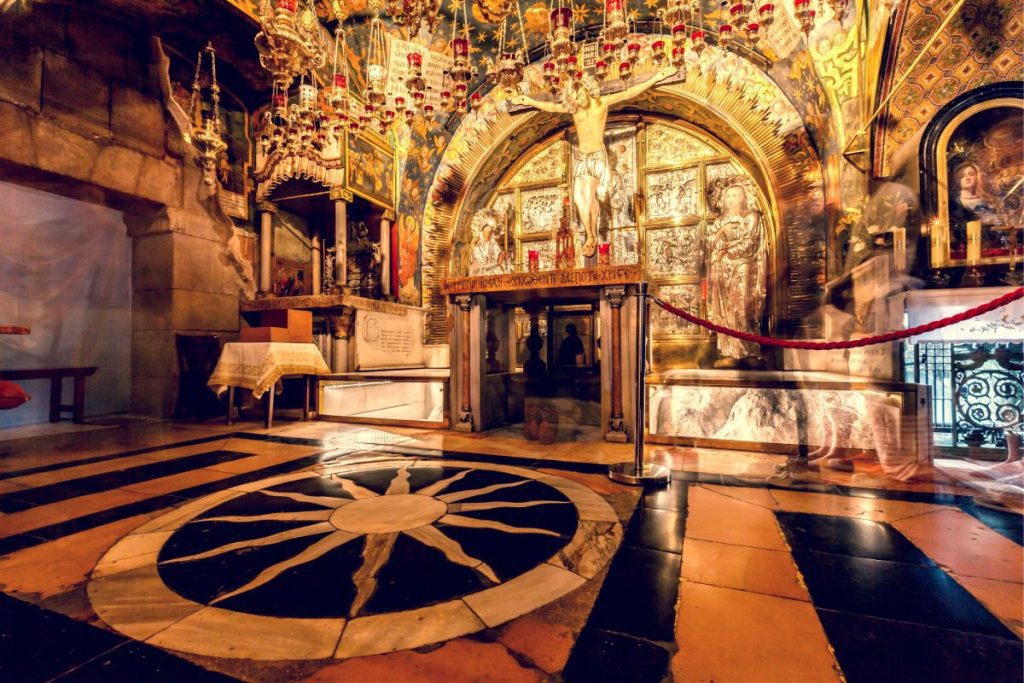
Finds From Temple Mt. Sifting Project
The Temple Mt. Sifting Project seeks to recover archaeological information from the Temple Mt. by sifting through soil saturated with artifacts illegally removed and dumped in the Kidron Valley in 1999. During the Crusader period, Christian pilgrims to Jerusalem, such as John of Würzburg and Rorgo Fretellus, recorded that buildings previously used by the Muslims on the Temple Mt. had been converted to Christian use. For example, the Dome of the Rock became a church called Templum Domini; al-Aqsa Mosque renamed Templum Salomonis; was first a royal palace and then the headquarters of the Knights Templar. And the Dome of the Chain became the Chapel of St. James.
Opus Sectile Use in the Dome of the Rock
In Picturesque Palestine, published in 1880. Charles Wilson remarked that some floors in the Dome of the Rock were paved with Opus Sectile formed from many fragments of previously used colored marble tiles. So are these Dome of the Rock Opus Sectile floor panels related to the Crusader period? The locations suggest they are. When the Crusaders occupied the Dome of the Rock, they converted it into a church. Also, the Christian pilgrim Fulcher of Chartres recorded that they covered and encased the central rock with marble.
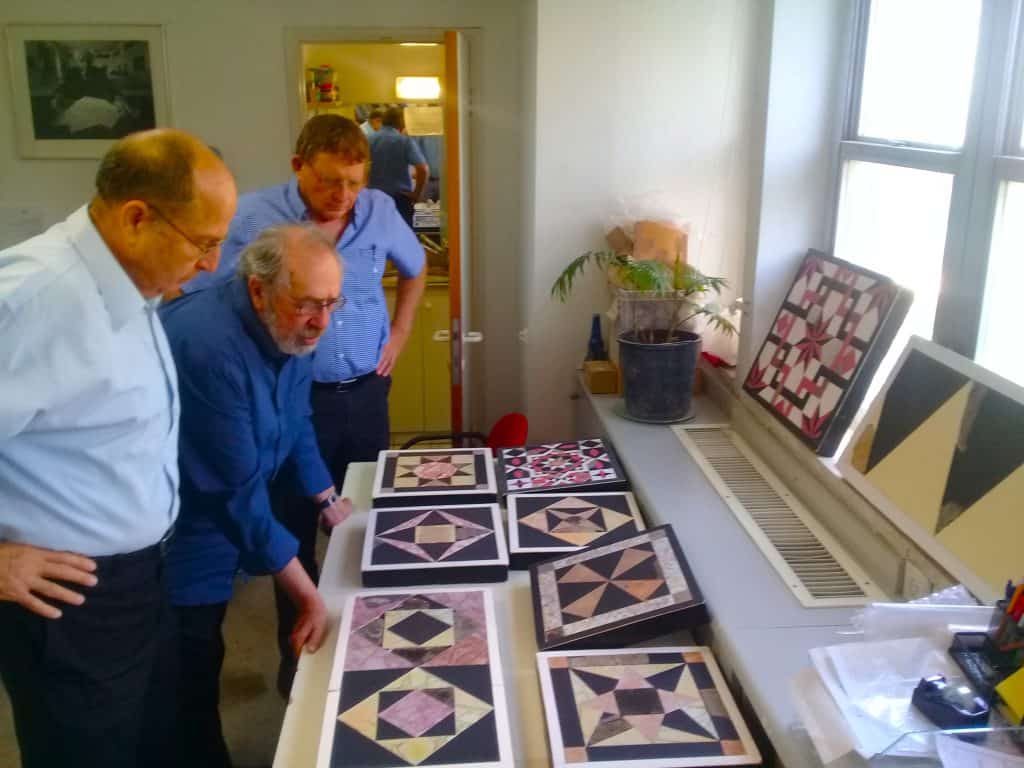
Credit: (CC By-Sa 4.0) Assaf Avraham Wikipedia
Comparing Opus Sectile Floors in the Dome of the Rock and the Latin Calvary Chapel
According to what Emek Tzurim Sifting Project found; the Crusaders used similar floor patterns in the Dome of the Rock and the Latin Calvary Chapel. In Christian teachings, a parallel is drawn between the narrative of Abraham being willing to sacrifice his “only son” Isaac (Gen 22:2); and God is willing to sacrifice his “only begotten Son” Jesus (John 3:16). In the Church of the Holy Sepulchre, this is the rock that Christians traditionally associated with the place where Jesus was crucified. So as to say the rock of Calvary or Golgotha (In Aramaic). Thus the Latin Calvary Chapel is parallel to the chapel at the Dome of the Rock. This connection is so important that there is a modern mosaic of the Binding of Isaac on the south wall of the Latin Calvary Chapel. The Crusaders thus gave parallel narratives parallel floors.
